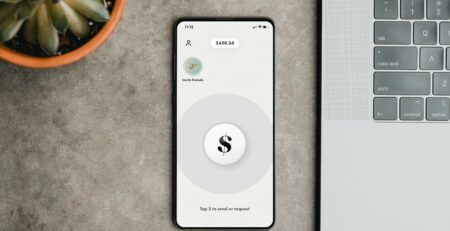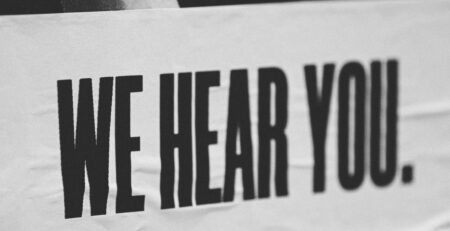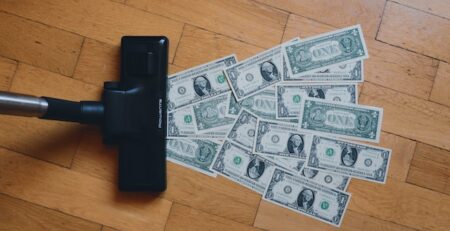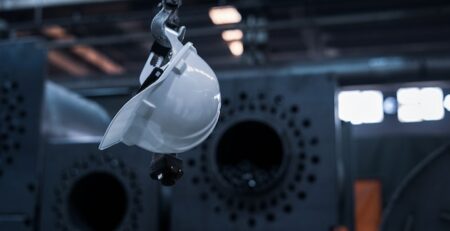Sculpting Success: Tips for Hiring 3D Artists for Your Team
In today’s rapidly evolving digital landscape, the demand for skilled 3D artists is surging across various industries, from gaming and film to product design and advertising. Hiring the right 3D artist can be a pivotal decision for any project or team, influencing not only the aesthetic quality but also the commercial success of your endeavors. Understanding the nuances of recruiting talented 3D artists will ensure that your team is equipped to meet the challenges and exploit the opportunities of the digital frontier.
Firstly, it’s essential to recognize the diverse specializations within the field of 3D art. From modelers and animators to texture artists and light technicians, each role requires a unique set of skills and creative prowess. Identifying the specific needs of your project or team is the first step in crafting a targeted recruitment strategy.
Another critical aspect is understanding the tools and technologies that are pivotal in the world of 3D artistry. Familiarity with industry-standard software like Autodesk Maya, Blender, or Adobe Substance, as well as emerging technologies such as VR and AR, is crucial. This knowledge not only aids in assessing the technical competence of candidates but also in appreciating their potential for innovation and adaptation in a constantly evolving field.
Moreover, the portfolio of a 3D artist is a treasure trove of insight into their skill level and style. A thorough review of their past work can reveal their proficiency in different 3D art forms, attention to detail, and even their ability to work collaboratively on complex projects. Portfolios can often speak louder than resumes in creative fields like 3D artistry.
However, technical skill and a robust portfolio aren’t the only considerations when hiring a 3D artist. Cultural fit within the team, the ability to communicate effectively, and a shared vision for projects are equally important. These softer skills ensure smooth collaboration and collective creativity, driving projects towards success.
Additionally, the recruitment process itself can be tailored to attract top talent. Innovative strategies such as hosting competitions, participating in industry conferences, and engaging with artists in online communities can elevate your visibility within the 3D artist community and attract a broader pool of talent.
Once candidates are identified, the interview process should be designed to test not only their technical skills but also their problem-solving abilities and adaptability to changes. Practical tests or project-based assignments can provide a deeper understanding of a candidate’s true capabilities beyond what is presented in their portfolio.
Compensation and career development opportunities are also vital in attracting and retaining top talent. Offering competitive salaries, continuous learning options, and clear paths for advancement within the organization can make your offer more appealing. For insights on competitive salary offerings, refer to How to Know if the Salary You Are Offering is Competitive.
In the era of remote work, managing a geographically dispersed team of creative professionals can be challenging. Implementing robust communication tools and regular virtual meetings can help maintain team cohesion and ensure that projects stay on track. For tips on managing remote teams, visit 10 Tips for Managing a Remote WorkForce.
Finally, fostering a supportive and inspiring work environment is crucial for creative professionals like 3D artists. Encouraging creativity, providing feedback, and recognizing achievements can boost morale and productivity. Learn more about recognizing employees effectively 10 Ways to Recognize Your Employees.
By understanding these facets of hiring and nurturing 3D artists, organizations can significantly enhance their creative capabilities and project outcomes. The right mix of talent, technology, and teamwork can turn artistic visions into stunning digital realities that captivate and engage audiences worldwide.
Most Asked Questions About Hiring 3D Artists
- What are the key skills and software proficiencies to look for in a 3D artist?
- How can I assess a 3D artist’s ability during the interview process?
- What strategies can help attract top 3D talent to my organization?
- How important is cultural fit when hiring a 3D artist?
- What are effective ways to manage and integrate 3D artists into existing teams?
- How can I keep 3D artists motivated and creatively engaged?
- What are the common challenges when managing remote 3D artists and how can they be overcome?

What are the key skills and software proficiencies to look for in a 3D artist?
When hiring a 3D artist, it’s crucial to look for a combination of technical skills and artistic flair. Key skills include strong proficiency in 3D modeling, texturing, and rendering. Familiarity with software such as Autodesk Maya, 3ds Max, Blender, and ZBrush is often essential. Additionally, an understanding of lighting, shading, and particle systems can be beneficial.
Artistic skills are equally important. A good 3D artist should have a keen eye for detail, color theory, and visual composition. These skills help in creating visually appealing and technically accurate representations. It’s also beneficial if the artist has some understanding of animation principles, even if they are not directly involved in animation.
Experience with project management tools and collaborative platforms like Trello or Asana can be indicative of the candidate’s ability to work effectively in team settings and manage their workflow efficiently. Moreover, knowledge of additional software like Adobe Photoshop for texture work or After Effects for video production can be advantageous, broadening the scope of their contributions to projects.
During the interview, consider asking for specific examples of projects where these skills were applied. This not only demonstrates the candidate’s proficiency but also their ability to apply their skills in practical scenarios. Additionally, a technical test or a short project during the hiring process can help assess these skills more effectively.
Another aspect to consider is the artist’s adaptability to new tools and technologies. The 3D art field is continuously evolving, with new software and techniques emerging regularly. An artist’s willingness and ability to learn and adapt to new tools can be a significant advantage.
Furthermore, while assessing technical skills through portfolios and tests is crucial, it’s also important to discuss past work experiences with the candidate. This can provide insights into their role in projects, the challenges they faced, and how they overcame them. Such discussions can also reveal how they collaborate with other team members and adapt to different work environments.
It’s also advisable to check references or feedback from previous employers or clients. This can provide further validation of the artist’s skills and professionalism. In some cases, it might also highlight additional strengths or areas for improvement that might not be immediately apparent through portfolios and interviews.
Lastly, continuous learning is a critical aspect of a 3D artist’s career. Look for candidates who show a commitment to upgrading their skills through courses, workshops, or self-study. This not only ensures they stay relevant in the field but also demonstrates a proactive attitude towards their professional development.
By thoroughly evaluating these aspects, you can ensure that you hire a 3D artist who is not only technically proficient but also a good fit for your team and projects. For more insights on evaluating technical skills, you might find it beneficial to consult with a creative staffing agency. Agencies like icreatives staffing specialize in matching skilled professionals with companies that require specific creative expertise, ensuring a good fit both technically and culturally.
How can I assess a 3D artist’s ability during the interview process?
Assessing a 3D artist’s ability during the interview process requires a combination of technical evaluations and behavioral assessments. Start by reviewing the artist’s portfolio thoroughly to understand the scope and quality of their work. Look for diversity in their projects, which indicates versatility, and pay attention to the details in their work, which shows their level of skill and attention to quality.
Technical interviews are crucial. Consider setting up a practical test where the candidate is asked to perform a task relevant to your projects, such as modeling an object, creating a texture, or lighting a scene. This not only tests their technical skills but also gives insight into how they manage time and solve problems.
Behavioral questions can help assess how the candidate handles feedback, works under pressure, and collaborates with teams. Questions about past project experiences, challenges faced, and how they were overcome can provide valuable insights into the candidate’s working style and ethics.
It’s also beneficial to involve other team members in the interview process, especially those who will work directly with the 3D artist. This can help assess the cultural fit and the potential for effective collaboration within the team.
Another effective method is to use case studies or project scenarios during the interview. Present a typical project your team works on and ask the candidate how they would approach it. This helps evaluate their critical thinking, planning, and execution skills.
For roles that require specific technical skills, software proficiency tests can be administered. These can be either standardized tests or custom exercises that reflect the actual work they will be doing at your company.
Communication skills are vital for any role, and assessing this during the interview is crucial. Pay attention to how clearly the candidate explains their portfolio projects and the technical details involved. This indicates how effectively they can communicate complex information to team members and stakeholders.
Consider also discussing ongoing learning and development. Ask candidates about the latest trends in the 3D industry and how they stay updated. This can indicate their passion for the field and their commitment to continuous improvement.
Finally, reference checks can provide additional insights into the candidate’s abilities and work ethic. Speaking with former employers or clients can confirm details provided by the candidate and provide further context about their skills and performance.
By combining these strategies, you can gain a comprehensive understanding of a candidate’s technical capabilities, problem-solving skills, and fit within your team. For more detailed guidance on conducting effective interviews, you might find this article on conducting performance reviews useful as it also touches on evaluating employee contributions in a detailed manner.
What strategies can help attract top 3D talent to my organization?
To attract top 3D talent to your organization, it’s essential to understand what motivates and appeals to creative professionals in this field. Start by ensuring your company’s projects are exciting and that there are opportunities for artists to grow and experiment. Highlighting innovative projects or the use of cutting-edge technology in your job postings can attract candidates who are looking for challenging and rewarding work.
Develop a strong employer brand that resonates with 3D artists. Share stories about your company culture, the creative processes, and the success stories on social media and your company website. Engaging content that showcases the work environment and team spirit can make your company more appealing to potential candidates.
Offer competitive compensation packages that include not only salary but also benefits like health insurance, retirement plans, and opportunities for bonuses or profit sharing. For guidance on creating competitive salary packages, refer to this article.
Participate in industry events, workshops, and conferences not only to network but also to present your company as an industry leader. This increases your visibility among potential candidates and can make your company a preferred employer for top talent.
Implement an employee referral program. Current employees can be your best recruiters, as they understand the company culture and the specific skills needed. Incentivizing referrals can help you reach a wider network of potential candidates.
Focus on creating a positive candidate experience from the first point of contact. Ensure that the application process is smooth, communication is clear, and feedback is timely. A positive recruitment experience can significantly impact a candidate’s decision to accept a job offer.
Invest in training and development programs. Show that your company supports ongoing education and professional growth, which is crucial for creative professionals who need to keep up with rapidly changing technologies and trends.
Consider flexible working conditions. Many creative professionals value flexibility in terms of working hours and the possibility of remote work. Offering such flexibility can make your positions more attractive to top talent.
Utilize specialized recruitment agencies that focus on the creative industries. These agencies can help you connect with candidates who have the specific skills you need. For more information on using staffing agencies, see this resource.
Lastly, ensure that your job descriptions are clear and appealing. Highlight the key responsibilities, the impact of the role, and the skills and experiences required. Well-crafted job descriptions can attract the right candidates and help them understand the role’s requirements and expectations.
By implementing these strategies, you can attract skilled 3D artists who are not only talented but also a good fit for your company’s culture and values. For more tips on recruitment, consider reading this article on recruitment marketing.
How important is cultural fit when hiring a 3D artist?
The importance of cultural fit when hiring a 3D artist cannot be overstated. While technical skills are crucial, a candidate’s ability to integrate and collaborate within your team is equally important. A good cultural fit ensures smoother communication, better teamwork, and overall a more harmonious work environment.
Assessing cultural fit starts with understanding your company’s core values and the dynamics of the existing team. It’s important to identify what behaviors and attitudes are valued in your organization. This might include teamwork, creativity, innovation, or a proactive attitude.
During the interview process, ask questions that reveal the candidate’s values, work ethic, and interpersonal skills. Questions about how they’ve handled conflicts in the past, their expectations from a workplace, and how they contribute to a team environment can provide deep insights into their suitability for your team.
Consider involving various team members in the hiring process. This not only helps in assessing the candidate’s ability to interact with future colleagues but also allows your team members to give their input on the potential hire, which can lead to more informed decision-making.
Look for signs of adaptability and an eagerness to learn, as these traits are important in a fast-paced, creative environment. Candidates who are open to feedback and show a willingness to adapt to new methods or processes tend to integrate better into existing teams.
It’s also beneficial to share clear expectations about the company culture during the interview process. This transparency helps candidates assess whether they can see themselves fitting in, reducing the likelihood of future discord.
Organize informal interactions between the candidate and potential team members, such as team lunches or group discussions. These settings can reveal more about the candidate’s personality and how they might interact with the team on a day-to-day basis.
Don’t underestimate the value of references in assessing cultural fit. Speaking with former colleagues or employers can provide additional insights into how the candidate operates within a team setting.
Finally, consider the long-term impact of cultural fit. Employees who mesh well with the company culture are more likely to be satisfied with their jobs, perform better, and stay with the company longer, reducing turnover and fostering a stable, productive work environment.
For more detailed insights on building trust and fostering a positive work environment, you might find this article on building trust between managers and employees helpful.
What are effective ways to manage and integrate 3D artists into existing teams?
Effectively managing and integrating 3D artists into existing teams requires a strategic approach that considers both the technical and interpersonal dynamics of your team. Start by providing a comprehensive onboarding process that not only covers the technical aspects of the job but also introduces the new artist to the team culture and company values.
Encourage collaboration by involving the new artist in team projects from the start. This not only helps them understand the working style of the team but also allows other team members to appreciate the skills and perspectives the new member brings.
Regular feedback is crucial. Provide constructive feedback on work and also encourage the new artist to voice their thoughts and suggestions. This two-way feedback fosters mutual respect and helps the artist adjust to the team’s expectations and standards.
Consider mentorship programs where experienced team members mentor the new artist. This can accelerate learning and integration and helps build supportive relationships within the team.
Utilize team-building activities that are not just fun but also enhance teamwork and communication. Activities that require creative collaboration can be particularly beneficial for teams that include 3D artists.
Be mindful of work styles and personal strengths. Some artists may excel in a highly collaborative environment, while others might produce their best work with more independence. Understanding and accommodating these preferences can lead to more effective team dynamics.
Transparency about project goals, roles, and expectations can help integrate new artists more smoothly into projects. Clear communication prevents misunderstandings and aligns the team towards common objectives.
Encourage ongoing learning and development. This not only helps the artist to continuously improve and stay updated with the latest in 3D art but also shows that the company invests in its employees’ growth.
Monitor the integration process and be open to making adjustments. Regular check-ins can help identify any issues early and allow for timely interventions to ensure successful integration.
Finally, recognize and celebrate the contributions of new artists. Acknowledgment can boost morale and motivate not just the new artist but the entire team. For more ideas on recognizing employees, check out this article.
How can I keep 3D artists motivated and creatively engaged?
Keeping 3D artists motivated and creatively engaged is essential for maintaining productivity and fostering innovation. Start by providing challenging projects that push the boundaries of their skills and creativity. This not only keeps the work interesting but also aids in their professional growth.
Encourage autonomy in how they approach their work. Allowing artists to have a say in the projects they work on and the methods they use can increase their investment in the outcomes.
Regularly review and update the tools and technologies available to your team. Access to the latest software and hardware can stimulate creativity and efficiency, keeping your team at the cutting edge of 3D design.
Implement a culture of continuous learning and development. Offer opportunities for professional development through workshops, courses, and conferences. This not only keeps your artists technically competitive but also shows your investment in their careers.
Provide regular and constructive feedback. Constructive criticism can help artists refine their skills and push their creative boundaries, while positive feedback can boost morale and encourage further creativity.
Create a supportive and collaborative environment. Encourage team members to share ideas, techniques, and experiences. Collaborative projects can lead to innovative solutions and help maintain a dynamic creative atmosphere.
Recognize and reward creativity and hard work. Whether through formal recognition programs, bonuses, or simply public acknowledgment, showing appreciation for their efforts can significantly enhance motivation.
Ensure a healthy work-life balance. Creative work can be demanding, and ensuring that your team has enough time to recharge is crucial for maintaining long-term creativity and productivity.
Involve artists in goal setting and planning processes. This inclusion can help them understand the bigger picture and see how their work contributes to the company’s objectives, enhancing their sense of purpose and engagement.
Offer competitive compensation and benefits. Ensuring that your pay scales are competitive can help prevent your talent from feeling undervalued and reduce turnover. For more on competitive salary strategies, refer to this article.
Encourage side projects or personal projects within the company. This can allow artists to explore new ideas and techniques that could potentially benefit the company while also keeping their creative juices flowing.
Finally, foster an atmosphere of psychological safety where artists feel free to express their ideas and concerns without fear of negative consequences. This kind of environment encourages risk-taking and innovation. For more on creating psychological safety in the workplace, see this resource.
What are the common challenges when managing remote 3D artists and how can they be overcome?
Managing remote 3D artists presents unique challenges, primarily related to communication, collaboration, and supervision. Overcoming these challenges is key to maintaining productivity and creativity in remote settings.
First, invest in reliable communication and project management tools. Tools like Slack, Zoom, and Asana can help maintain clear and consistent communication and keep everyone on the same page.
Establish regular check-ins and updates. These can be daily or weekly, depending on the project’s intensity, to ensure that all team members are aligned and any issues are addressed promptly.
Create detailed project briefs and clear expectations. When working remotely, the lack of face-to-face interaction can lead to misunderstandings. Detailed briefs can provide a clear direction and reduce confusion.
Encourage the use of collaborative tools that allow for real-time feedback and iteration. Tools like Google Drive, Figma, and Trello can facilitate seamless collaboration among team members, regardless of their location.
Implement a results-oriented work environment. Focus on the outcomes rather than the process. This approach can be particularly effective in remote settings where direct supervision is not possible.
Offer flexible working hours. Remote work often allows for flexibility, and accommodating different time zones or personal preferences can lead to increased productivity and job satisfaction.
Provide opportunities for social interaction and team bonding. Virtual coffee breaks, online team-building games, or digital hangouts can help foster a sense of community and team cohesion.
Ensure access to necessary resources and technology. Remote artists should have the same level of access to software and hardware as their in-office counterparts to maintain productivity levels.
Train team leaders and managers in remote management skills. Effective remote leadership involves unique skills and strategies. For more on this, consider reading this guide.
Finally, be mindful of the challenges of isolation and provide support where needed. Regular wellness checks can help address any mental health issues that may arise from working remotely.
Conclusion
In conclusion, hiring and managing 3D artists involves a blend of strategic recruitment, effective management, and fostering a creative and supportive work environment. By understanding the specific skills required, integrating artists into teams effectively, and maintaining their motivation and creativity, organizations can harness the full potential of their 3D talent. Challenges, particularly in remote settings, require thoughtful approaches and the use of technology to bridge communication gaps. Ultimately, the success in sculpting a skilled and innovative 3D team lies in the continuous effort to align their creative talents with the organization’s goals and culture. Embracing these strategies will not only enhance the capabilities of your 3D artists but also drive your projects to new heights of creativity and innovation.
In today’s competitive market, finding the right creative and marketing expert can be a challenge. But with icreatives, you’re in experienced hands. With 37 years in staffing and a track record of matching more than 10,000 employees to over 1,000 companies worldwide, we know how to connect you with the best. Plus, you only pay if you hire—there’s no risk, only results.
Ready to find your perfect creative or marketing expert? HIRE WITH ICREATIVES today!












